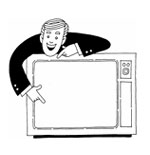
Invasion of the Empty Universals
TECHNOLOGY IN THE HOUSE OF GOD
Imagine you’re at Mass: The epistle has just been read and the deacon turns to receive a blessing from the priest. He then goes to the altar and picks up an object that he lofts over his head, and processes thus to the lectern. There he incenses and then reads the Gospel from the object while an altar boy standing by gently swings the thurible. After completing the proclamation, the deacon bends down to kiss the object: a seven-by-nine-inch iPad.
Any Catholic with a little sensibility would cringe to see such a thing. Yet in many parishes, computers already have accidental functions in the worship space (e.g., as a lighting control panel). And now, mobile Internet devices (including iPads and other e-readers) are poised to take on a liturgical function — as objects from which Scripture and liturgical texts are read.
Many think that the transition from printed material to e-readers is a natural step — even at Mass. After all, computers are the technology of our day, whereas leather-bound books were the technology of the fifteenth century. Indeed, there are already computer applications (apps) that arrange the daily propers and ordinaries, mitigating the need to search through physical books or to set ribbons. Moreover, Mass parts can change, necessitating even more elaborate page markers in printed books. The invocation of St. Joseph in the eucharistic prayers authorized by Pope Francis in May 2013, for instance, has required the insertion of hand-written notes into printed sacramentaries. Even without such changes, a priest who determines to use optional readings for a particular saint’s feast may leave Massgoers in the pews flipping through their missals in order to keep up. Web apps could, and in fact do, easily solve problems like these. With the help of a Wi-Fi system, Massgoers’ mobile devices could synchronize instantly to the correct readings upon entering the worship space.
Such an arrangement surely would be convenient. But with things liturgical, more than mere convenience must be in play. Of great importance is the symbolic meaning of objects that serve a primary role in the liturgy (e.g., the Lectionary). Liturgical objects derive their symbolic meaning from both their form and their conventional use. Thus, unlike a physical book, an e-reader or similar mobile device cannot serve as an apt symbol in the Christian liturgy. Nor is an e-reader neutral in this regard: Its symbolic import is mostly negative where the liturgy is concerned.
You May Also Enjoy
There is something undeniably bittersweet about the sublimation of a distinct culture into the flat, American consumerist anti-culture touted as an improvement.
Modern Catholic liturgists have tried to graft the “fellowship experience” onto the Mass, but it hasn’t worked.
We should take the Catholic adage ‘what you pray is what you believe’ as an urgent warning.

